Thornton Creek Restoration and the Importance of the Hyporheic Zone
Video Transcription
Transcript by Speechpad
(Updated September 2021)
We are here at the Cedar River Watershed. We are doing an experiment to see if we can transplant beneficial bacteria and invertebrates from this pristine watershed to a restored urban watershed, Thornton Creek.
What is it that that meter is doing?
This is a dissolved oxygen probe that also measures conductivity and temperature (YSI Pro2030). Trying to get an idea of if there's more dissolved oxygen in the well, and so we can compare sites. Then we measure solutes.
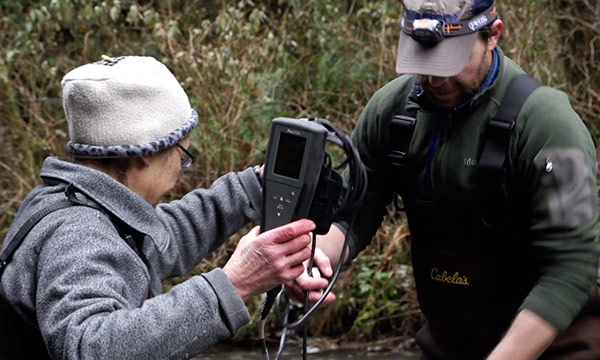
An example of a solute?
Basically, ions in the water. How many particles are in the water, so typically, if you have a more polluted site, you have more ions and so that will show higher conductivity. Yesterday, when we were measuring conductivity in Thornton, we were having readings in the 200, and now we're seeing conductivity around 50, which, you know, is one indicator that this is a pristine stream. Thornton is not.
The reason why we're taking the water from the piezometers, because the piezometer's specially designed to capture water that flows underneath the stream. This is the hyporheic water. I'm gonna take that back to the lab and analyze it for little micro creatures.
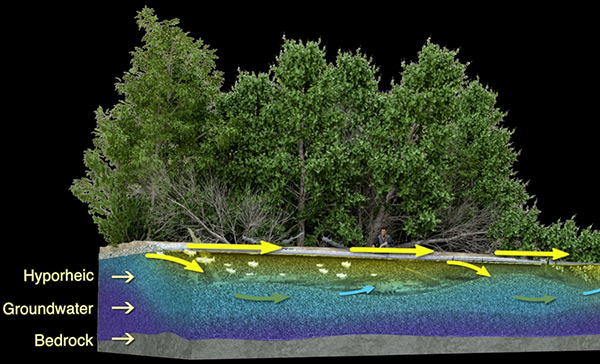
This is what we're calling a colonization basket. We put the material that was used to rebuild Thornton Creek. So we actually got that, put that in here, and what we're hoping is that bacteria and invertebrates will colonize the material that's in there.
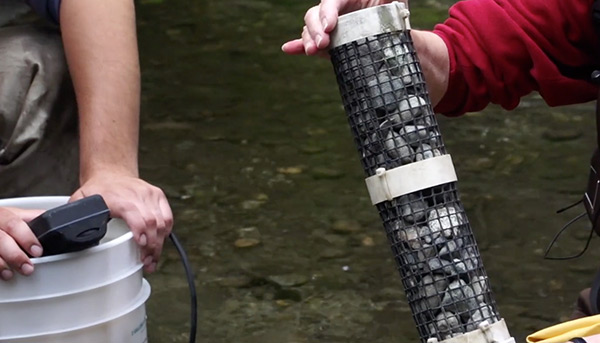
When the baby salmon are incubating, they are down in the gravel. You know, most of their food as they grow up, they're feeding from the water column in the stream itself, but it doesn't mean that things that are happening in the hyporheic aren't still super important to salmon. There's a lot of very small invertebrate taxa that are down there, playing important roles.
Then we're going to take this basket, put it into a tube with water, and keep it on ice and transplant it to the Thornton Creek Restoration Site.
We're going to take these rocks from Cedar River that we just collected and stick them into the well here at Thornton Creek to then hopefully, the benthic invertebrates and the microbes that are coming from Cedar River will help to jumpstart the hyporheic ecosystem here.
And we probably have what, couple more months out here? And then eventually pull this basket again and some of them we'll pull and take back to the NOAA lab.
When we studied Cedar River, we found a lot of mayflies, caddisflies, and stoneflies. And those three species are often the dominant species in the stream and indicates not a lot of pollution. The physical restoration has been done.
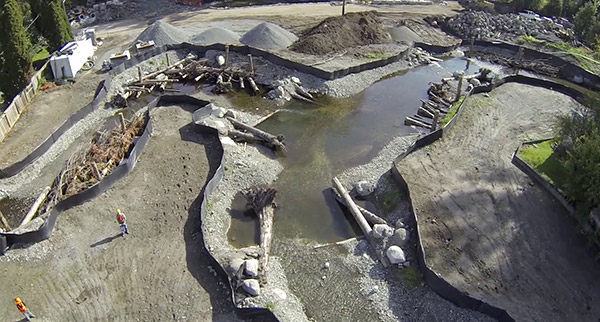
The stream channel's been changed, and implanting these insects into the stream is focusing on the biological component of the restoration, because these insects really play an important role in the ecosystem, recycle nutrients back into the food web, break down dead organic matter. And then they also are very important source of food for fish.
Here we are in Thornton Creek again. This is one of our favorite spots in the city. Linda Rhodes and I have been working on monitoring Thornton Creek on this kind of really exciting, innovative approach to stormwater management and urban creek restoration.
Just looking around, you can see how much has changed. Yeah.
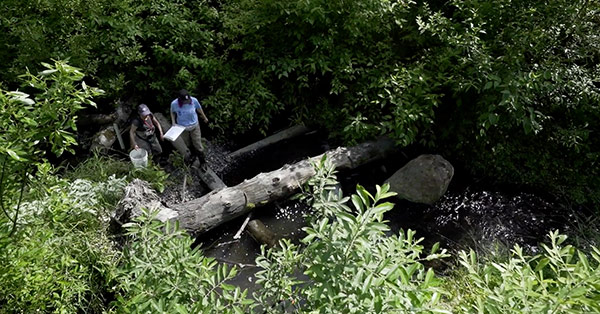
So, a lot of times, we look at the stream and we only really notice the bigger things. The greatest number of species and even the greatest mass of organisms that live in the stream are the little things, insects and worms that scurry along in the bottom that we might not even be able to see with our eye. Contributing even more to the ecosystem and more to the mass are all the microbes that are supporting the invertebrates, especially in the hyporheic zone.
Bacteria are an important part of the world. The overwhelming majority of them are good and we need them. What they're doing is converting a lot of the organic material, dead stuff into nutrients so that it can be taken up by other kinds of organisms, or they're serving as food for the macroinvertebrates themselves. And that's been one of the things that we've observed is that the activity of the bacteria in the hyporheic zone is much higher in these restored areas than in the unrestored areas. So that means that they're very busily working away.
But, you know, they created this hyporheic zone, they built it, and they came. Invertebrates immediately started populating that area.
The very interesting, cool aspect of this Thornton restoration is that Seattle Public Utilities is actually considering the importance of the hyporheic and seeing that as one important piece that needs to be brought back to try to improve functioning for the whole stream.

Additional Blog Posts of Interest
The Phosphorus Problem: Wastewater Treatment Options and Process Monitoring Solutions
6 Steps to Reduce Total Phosphorus in Water Resource Recovery Facilities